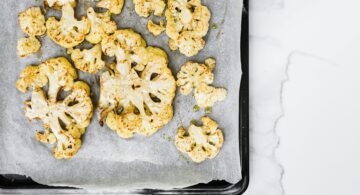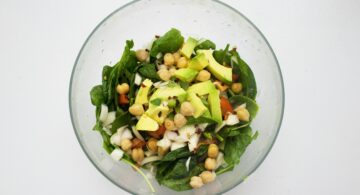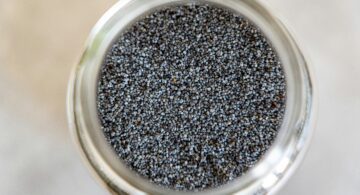Diet and Foods That Affect Restless Leg Syndrome
Restless legs syndrome (RLS) can affect anyone at any age. In fact, around one in ten people are liable to suffer from this unpleasant restless leg disorder at some point in their lives.
With symptoms ranging from mild to severe, sufferers experience an uncontrollable urge to move their legs to try and relieve the unpleasant tingling or aching sensations in their limbs. And while this in itself is not harmful, the effect of disrupted sleep can lead to excessive tiredness.
While there is no sure fire cure for restless leg syndrome, a diet high in folate and other essential nutrients can help manage the symptoms.
Restless Leg Syndrome Treatment and Dietary Needs
Obtaining relief from the RLS symptoms is the focus and that includes maintaining a proper restless leg treatment, diet and lifestyle.
- Change your diet to include an increased amount of foods high in folate such as asparagus and spinach. Dark green leafy vegetables are known to have high folate content.
- Diversify your breakfast menu with the use of whole grain products and various breakfast cereals. Read the labels to find the one you like with the highest level of folate.
- Increase your intake of eggs, unless contraindicated due to other dietary concerns such as high cholesterol. Eggs are a good source of folate and essential B vitamins
- Having an iron deficiency is known to increase RLS symptoms. Make sure that red meats and liver are included in your diet as these are great sources of iron. However, do not get all your iron sources from red meats. Resolving iron deficiency it is important to vary the source. Try iron fortified cereals, beans, leafy greens, figs, and shrimp.
- Eat small frequent meals. This keeps the nutrients flowing through your body at a more consistent level than by eating a few large meals.
- Include nuts, fish, fresh fruits, seeds, whole grain and vegetables on a regular basis into your treatment diet instead of processed or prepackaged meals.
- Include adequate amounts of calcium and essential vitamins such as B12 in your diet every day. Use supplements only if you’re unable to consume these nutrients in the foods you eat.
- Combine a healthy diet high in essential nutrients with a moderate level ofexercisefor the best results in managing restless leg syndrome.
- Recognize the difference in dietary foods and natural supplements. Many alternative medicine proponents have a variety of natural foods and supplements. Always check with your healthcare provider before beginning any restless leg syndrome treatment.
- Get your recommended daily amount of Magnesium. RLS has been associated with a mineral deficiency of magnesium. Eat more foods such as black beans, broccoli, seafood and dark chocolate. Magnesium helps with leg twitching.
- Get enough potassium. Potassium lays a role in nerve and muscle function. Because potassium affects muscle contractions and nerve impulses. Get more dried apricots, avocados and bananas in to your daily routine.
Track Your Symptoms
Before making any alterations to your diet, it can be helpful to keep a diary tracking your eating and drinking habits. At the same time, make a note of the intensity of your RLS symptoms.
This can be a great indicator as to whether certain food or drink items are worsening your condition. If so, try cutting down or even eliminating some of the possible culprits to see if there’s an improvement in the restless legs disorder.
Avoid These At ALL Costs
The first line of defense against restless legs syndrome is to avoid substances or foods that may be causing or worsening the problem.
RLS treatment includes staying away from:
- Alcohol
- Caffeine
- Nicotine
- Your trigger foods or actions
By the way, personal testimonies also lead me to believe RLS can be caused by excitotoxins in your food, such as glutamate, which are basically food additives. Avoid MSG and artificial sweeteners to start.
The Bottom Line
Restless Legs Syndrome can have a significant physical and emotional impact on those who suffer from it and even those whom live with one effected from the restless leg disorder.
However, through a few lifestyle changes and treatment plan with better eating geared towards foods that are high in folate, iron, magnesium, potassium and other essential nutrients, restless leg syndrome can be tamed.
Spinach and Shrimp Salad
Salad Ingredients
- 1 lg avocado – peeled and diced
- 1 tsbp fresh orange juice
- 1 lb fresh spinach roughly chopped
- 1 lb shrimp
- 3 oranges, sectioned
Dressing Ingredients
- 2/3 cup olive oil
- 1/3 cup freshly squeezed orange juice
- 2 tbsp sugar
- 1 tbsp red wine vinegar
- ½ tsp orange zest
- ¼ tsp salt
- ¼ tsp dry mustard
- 1/8 tsp hot pepper sauce
Preparation
To make dressing, combine salad oil, 1/3 cup orange juice, sugar, vinegar, orange peel, salt, mustard and hot pepper sauce in a jar. Shake well and chill. Sprinkle avocado rings with 1 tablespoon of orange juice. Combine avocado, spinach, shrimp and orange sections in a large bowl.
Toss with chilled dressing. Makes 8 portions.


















